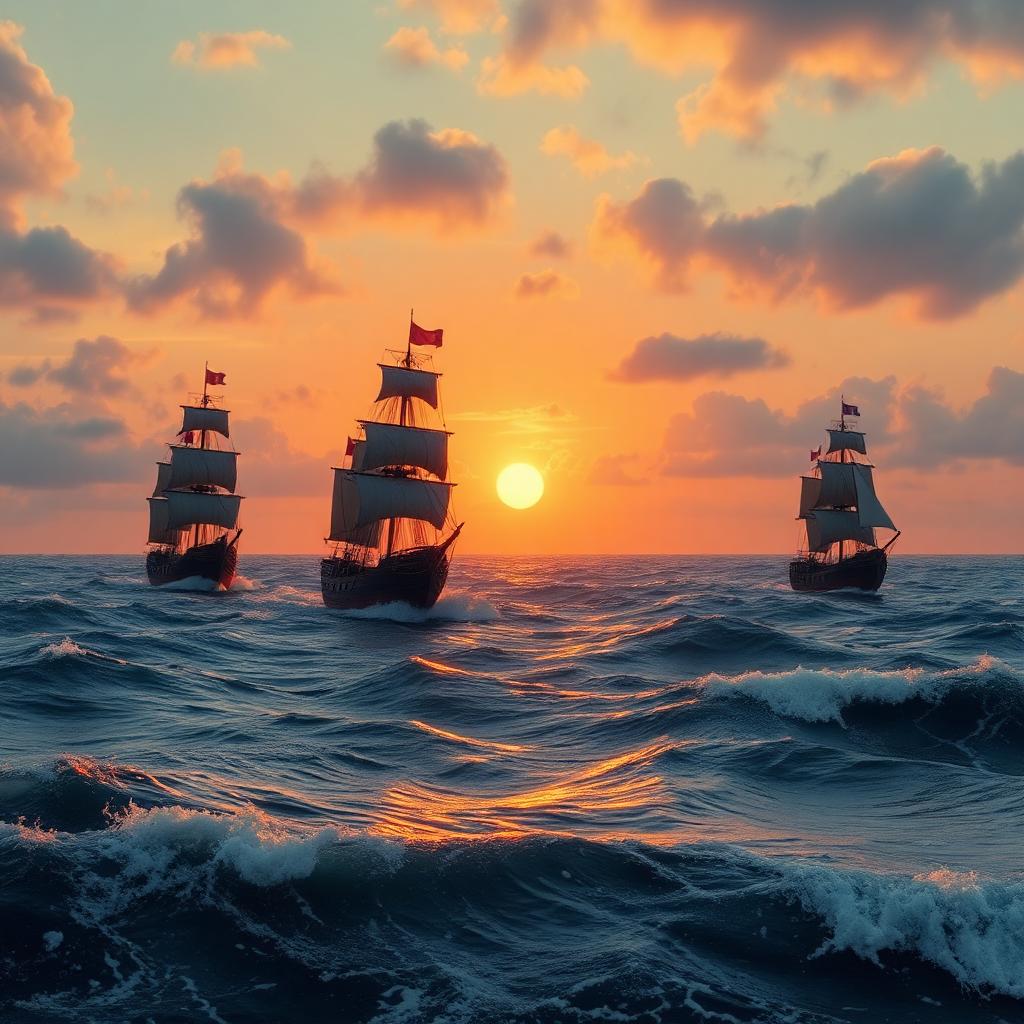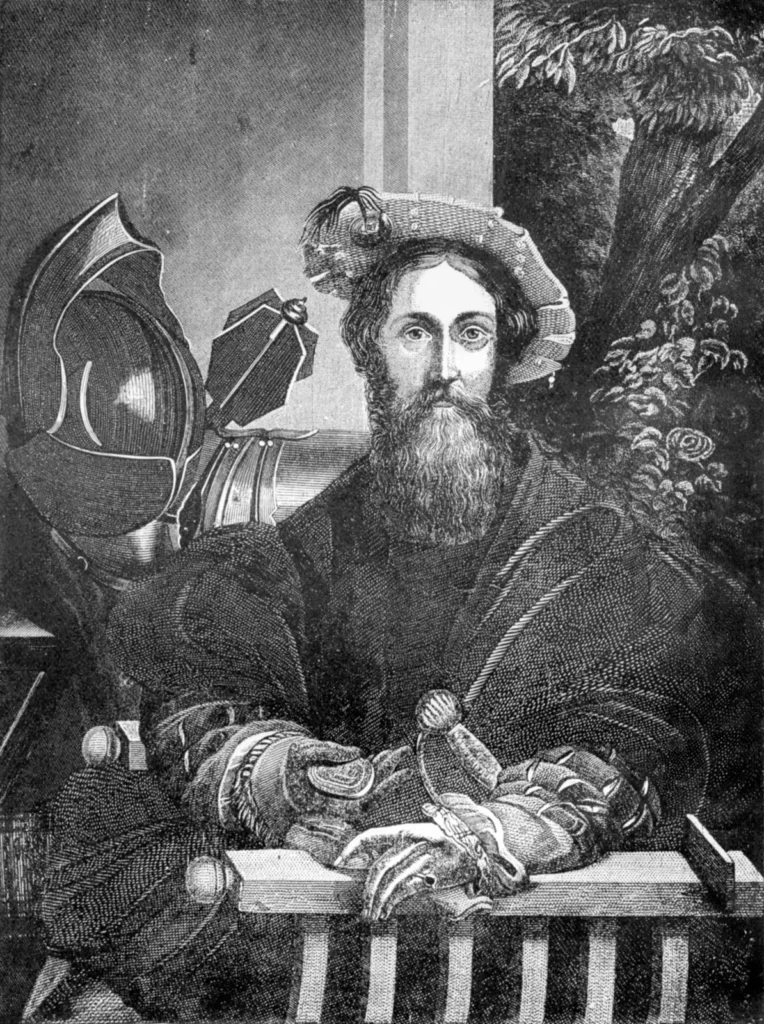
He spent 11 years getting his adventures sponsored. He was a terrible navigator without any experience at sea. But he was determined and had courage while he dreamed of finding India, China, and Japan. The indigenous people and their descendants in Central and South America are not very fond of him due to his treatment of their ancestors. But in the rest of the world, he will always be the hero who made the path to a new world!
The son of a weaver from Genoa, Italy, Christopher Columbus is often a figure surrounded by myth. Though he preferred to be known as “the Admiral,” he had no prior experience in commanding ships or fleets. His story is pieced together from logbooks and fragmented accounts, leading historians to debate whether he was born in Portugal instead of Italy.
Columbus developed an early interest in exploration. Initially, his ambitions were more driven by wealth than by a genuine interest in people and cultures. But was he truly the first to discover the American continent? Archaeological evidence suggests that Africans traveled to these regions long before Columbus. Significant quantities of pottery, featuring distinct African motifs, have been discovered in Central and South America. Furthermore, it is well-documented that the Icelandic Leif Eriksson reached North America from Greenland approximately 500 years prior. Some even believe the Portuguese reached the continent before Columbus, as evident from place names like Braxilia (Brazil), Antilias (the Antilles), and Ventura.
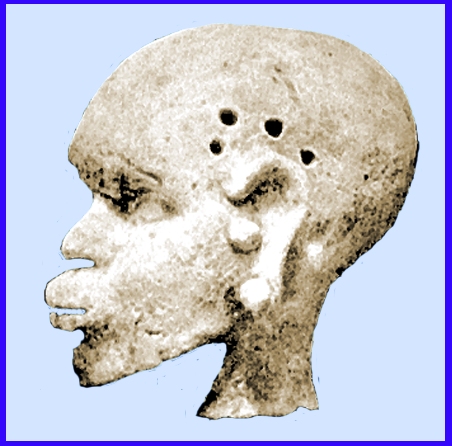
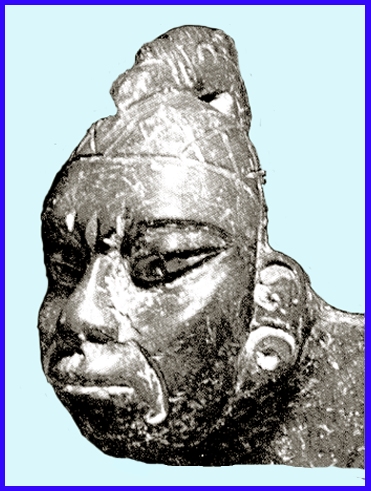

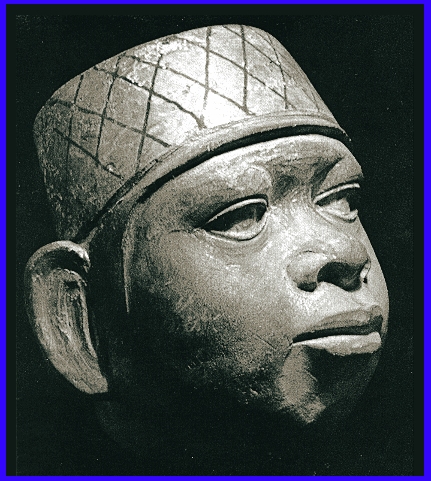
What can be definitively stated is that Columbus’s voyages led to a significant influx of Spaniards, leaving a lasting impact on the languages and cultures of South America, Central America, and large parts of North America.
Columbus’s determination to find a faster route to India is another facet of his story. He became increasingly obsessed with discovery and drew inspiration from a wide range of literary sources, spanning from the serious to the fantastical. He selectively referred only to texts that supported his theories, including the Bible and imaginative travel accounts written by people who had never traveled beyond their hometowns. Columbus also diligently studied omens, signs, and prophecies, becoming fascinated by these ideas. He was particularly influenced by Marco Polo’s accounts of India and China.
Understanding that he needed financial backing to pursue his ambitions, Columbus first approached King John of Portugal with his plans to find a route to India. The king dismissed him as an arrogant chatterbox who underestimated both the Earth’s circumference and the size of the oceans, sending him away. And yes, Columbus miscalculated the Earth’s size by 10,000 kilometers, a mistake that would have significant consequences for his navigation on subsequent voyages.
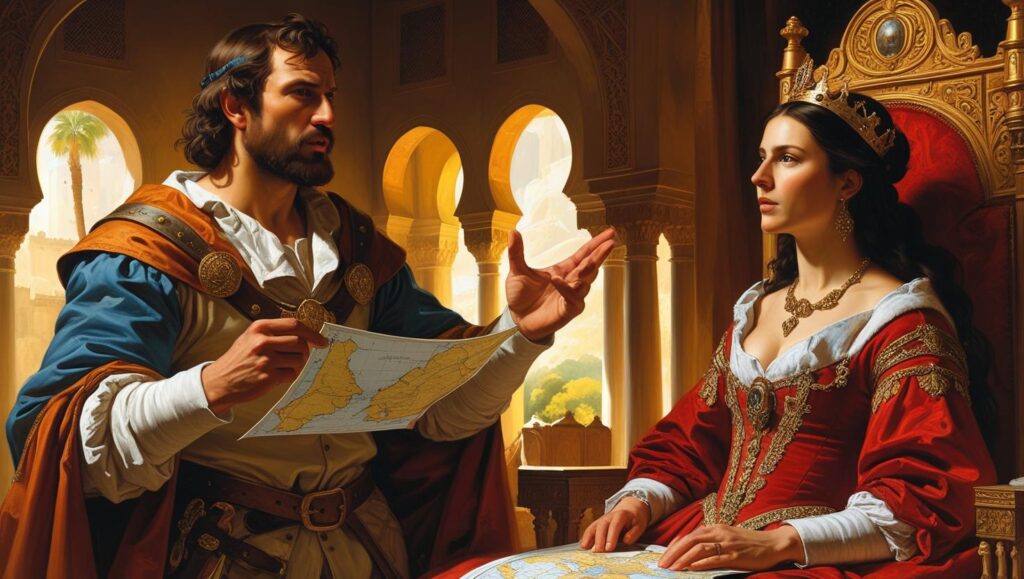
After being rejected by the Portuguese king, Columbus sought support from the royal court in the Spanish city of Córdoba, where he encountered Queen Isabella and King Ferdinand. The king was not particularly interested and passed Columbus’s proposal to the queen, who saw potential benefits in an expedition westward. Souls needed saving, and the prospect of returning with valuable natural resources promised to bolster the king and queen’s depleted treasury.
Although King Ferdinand had to approve the expedition, it also required the endorsement of a committee of experts, including theologians and jurists who meticulously analyzed Columbus’s every word. They frequently summoned him for questioning, and he was careful with his answers, fearing exposure of his plans might allow others to steal his idea.
In summary, Columbus felt ridiculed and believed he was being treated as a fool. The commission relied on scripture, with the church Father Augustine stating that:
“Everything outside the known world is uninhabitable; emptiness. No one can live in the warm zones; both vessels and everything would burn up.”
The commission was skeptical, raising doubts about the existence of large land areas or populations unknown to them, given that “it has been several thousand years since God created the world.”
With the assistance of sea captain Martín Alonzo Pinzón and Friar Pérez from the monastery in Rábida, Queen Isabella once again called Columbus to present his case. A new commission was formed with clear instructions to approve the project. After further negotiations, Columbus’s plans were finally approved, and the necessary papers were signed on April 14, 1492. With that, the weaver’s son from Genoa had become Admiral Cristóbal Colón. If he succeeded in crossing the sea, he would also be appointed vice-king and governor.
Some historians suspect that he had already been on the other side of the ocean because in one document, it states,
“to receive compensation for what he had discovered in the Ocean.”
To Columbus’s advantage, the transcription is poor, and the translation seems inaccurate.
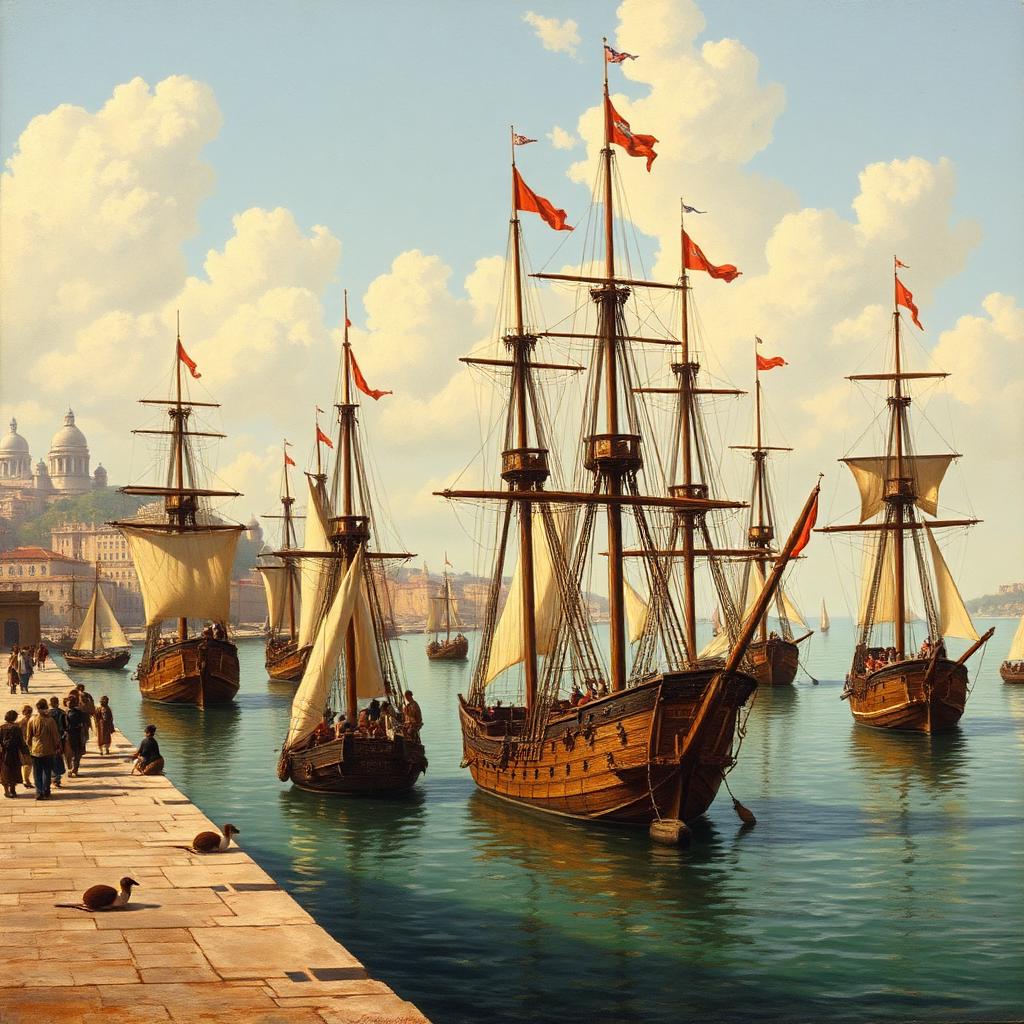
But there were still some challenges. The Spanish Inquisition demanded that every citizen be baptized, including 200,000 Jews who were not. About 70,000 to 80,000 of them chose to be baptized, while the rest were expelled, which caused the port to be blocked by ships being prepared for the expulsion. Once again, the sea captain Martín Alonzo Pinzón came to his aid, securing and preparing ships and recruiting experienced sailors, including some who were convicted criminals. Those who volunteered to join Columbus’s ships would be pardoned and set free. No requirements were placed upon them, including that of seamanship. The temptation was the gold on the other side of the ocean.
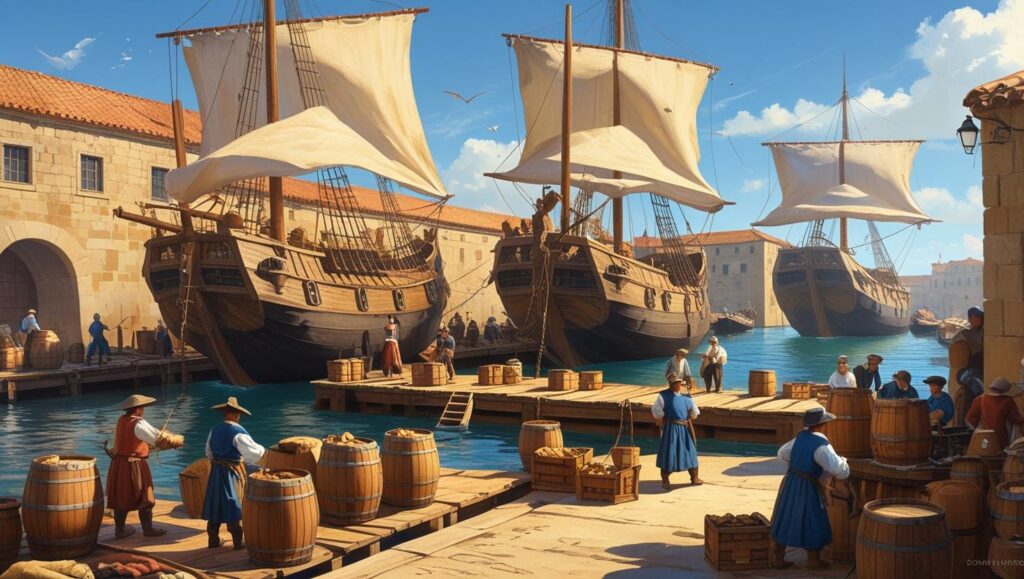
The three ships chosen were the “Pinta”, the “Niña”, and the “Santa Maria”. Allegedly, none were grand ships, and it is also not known what the Santa Maria looked like. There is uncertainty regarding the number of participants in this expedition, with estimates ranging from 68 to 200 men. It is claimed that a third of the crew were “convertos,” meaning baptized Jews or people of Jewish descent. This has led Jewish writers like Simon Wiesenthal and Sara Leibovici to speculate that the purpose of the expedition was to find a new land for the Jews.
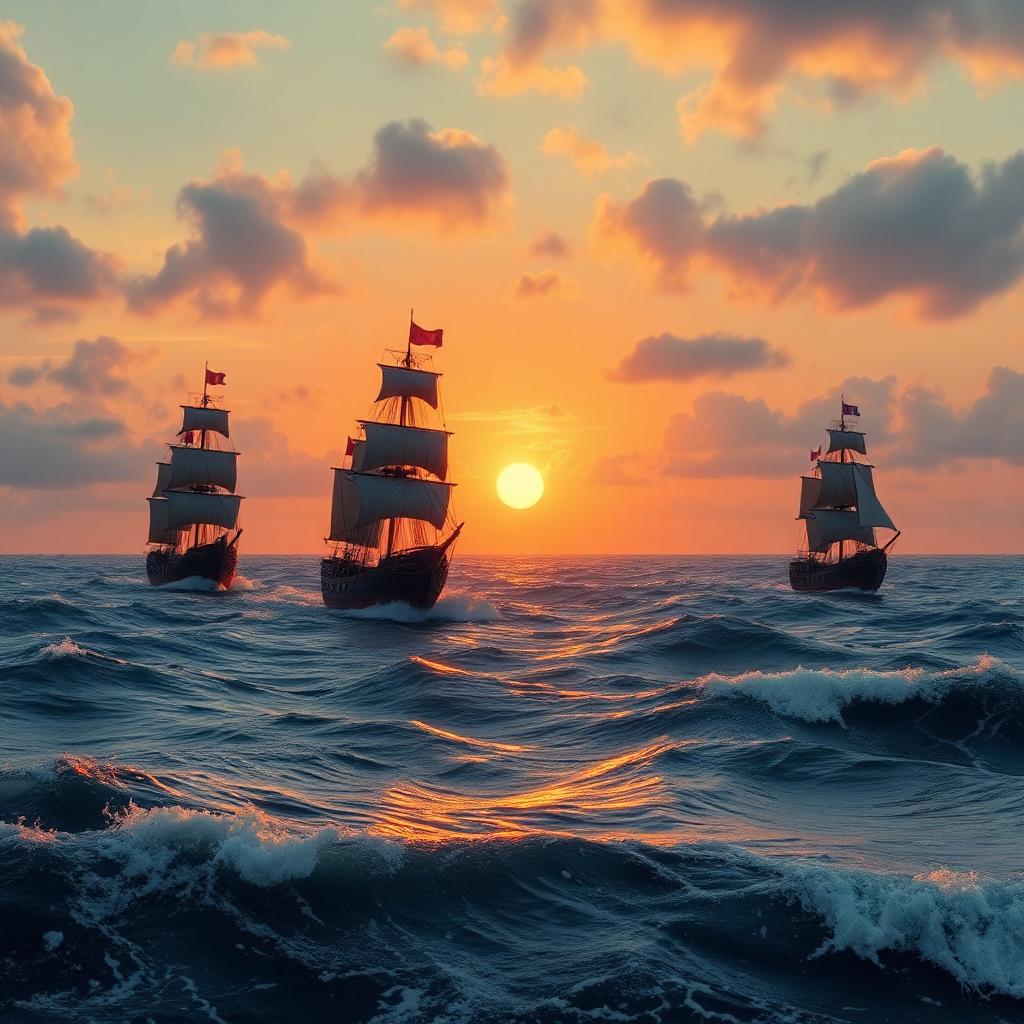
The voyage begins on August 3, 1492. Even before they set sail across the ocean, they must repair the sails and rudder on two of the ships in the Canary Islands. The food is prepared in primitive conditions, cooked in sandboxes on deck. They are only armed to defend against pirates. No one has a cabin; everyone sleeps on mats on deck, except for Columbus, who has a cabin with built-in furniture. They have brought glass beads, small mirrors, brooches, bells, and red knitted caps, based on what the people of West Africa liked, and it was believed that the Chinese, Japanese, and Indians liked them too.
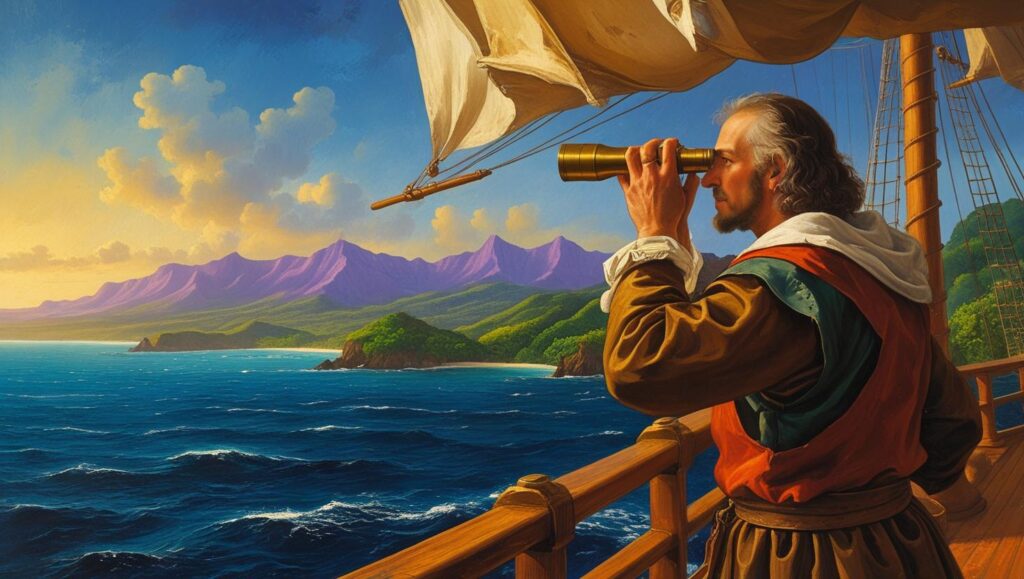
The admiral, as mentioned, is not skilled in navigation and makes daily errors in calculations. He misjudges speed and thus also the distances covered. He does not master the use of his instruments. However, he is actually the first to discover the discrepancy between the magnetic and true north poles.
Join us as we cross the ocean in the next article about Columbus!
This article is edited by: Lauran Timlin
Sources: “Columbus” by Herman Lindquist
More stories from Bay Islands here:

